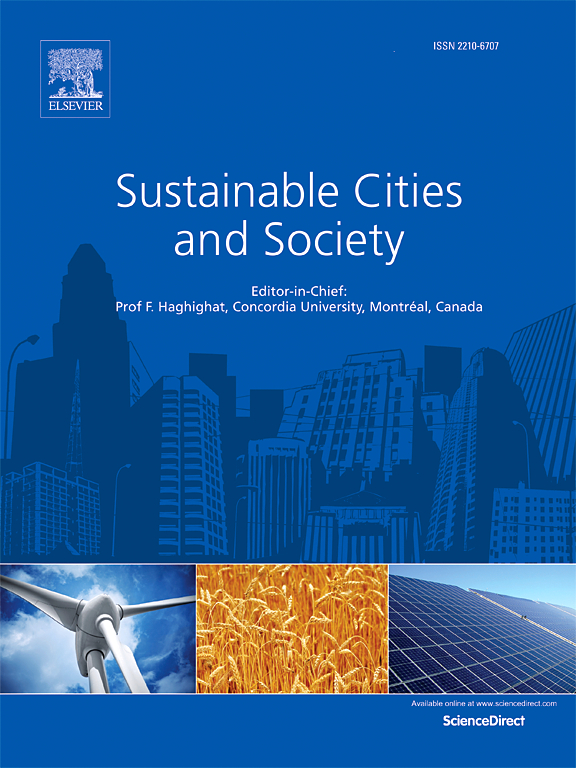Marginal abatement cost of urban emissions under climate policy: Assessment and projection for China's 2030 climate target
IF 10.5
1区 工程技术
Q1 CONSTRUCTION & BUILDING TECHNOLOGY
引用次数: 0
Abstract
This study evaluates the effectiveness of Low-Carbon City Pilot programme and predicts its future trajectory through 2030, using the marginal abatement cost of CO2 as the outcome indicator to address policy anticipation effects. Drawing on Chinese city-level panel data (2006–2019), we estimate and forecast marginal abatement cost through a hybrid approach combining machine learning regression, autoregressive integrated moving average and quadratic directional distance function. A Difference-in-Differences model is used to assess the policy's impact, while a cost-intensity matrix is employed to explore cities’ low-carbon transition stages and pathways to 2030. The results reveal that Low-Carbon City Pilot programme significantly increased the marginal abatement cost of CO2 in pilot cities, driven by green technology innovation and industrial structure upgrading. These effects are more pronounced in developed, eastern, non-resource-based and non-industrial cities. Under the carbon peaking target, most cities will experience rising abatement costs, with widening inter-city divergence. By 2030, fewer than one-fifth of cities will achieve low-carbon transition, while the majority will remain in mid- or early-transition phrases. We recommend exploring emission reduction potential in central, western, and resource-based cities, addressing transition barriers, and formulating city-specific policies that account for unique underlying costs while enhancing synergies to avoid carbon leakage and worsening climate inequality.
求助全文
约1分钟内获得全文
求助全文
来源期刊

Sustainable Cities and Society
Social Sciences-Geography, Planning and Development
CiteScore
22.00
自引率
13.70%
发文量
810
审稿时长
27 days
期刊介绍:
Sustainable Cities and Society (SCS) is an international journal that focuses on fundamental and applied research to promote environmentally sustainable and socially resilient cities. The journal welcomes cross-cutting, multi-disciplinary research in various areas, including:
1. Smart cities and resilient environments;
2. Alternative/clean energy sources, energy distribution, distributed energy generation, and energy demand reduction/management;
3. Monitoring and improving air quality in built environment and cities (e.g., healthy built environment and air quality management);
4. Energy efficient, low/zero carbon, and green buildings/communities;
5. Climate change mitigation and adaptation in urban environments;
6. Green infrastructure and BMPs;
7. Environmental Footprint accounting and management;
8. Urban agriculture and forestry;
9. ICT, smart grid and intelligent infrastructure;
10. Urban design/planning, regulations, legislation, certification, economics, and policy;
11. Social aspects, impacts and resiliency of cities;
12. Behavior monitoring, analysis and change within urban communities;
13. Health monitoring and improvement;
14. Nexus issues related to sustainable cities and societies;
15. Smart city governance;
16. Decision Support Systems for trade-off and uncertainty analysis for improved management of cities and society;
17. Big data, machine learning, and artificial intelligence applications and case studies;
18. Critical infrastructure protection, including security, privacy, forensics, and reliability issues of cyber-physical systems.
19. Water footprint reduction and urban water distribution, harvesting, treatment, reuse and management;
20. Waste reduction and recycling;
21. Wastewater collection, treatment and recycling;
22. Smart, clean and healthy transportation systems and infrastructure;
 求助内容:
求助内容: 应助结果提醒方式:
应助结果提醒方式:


